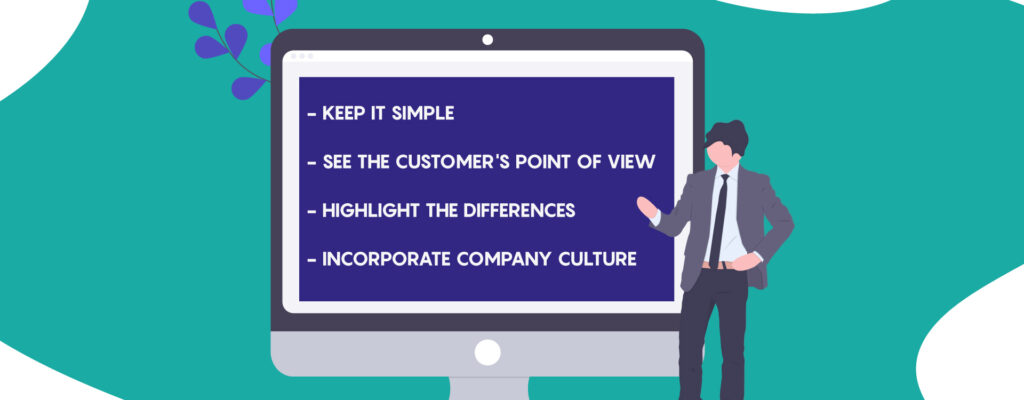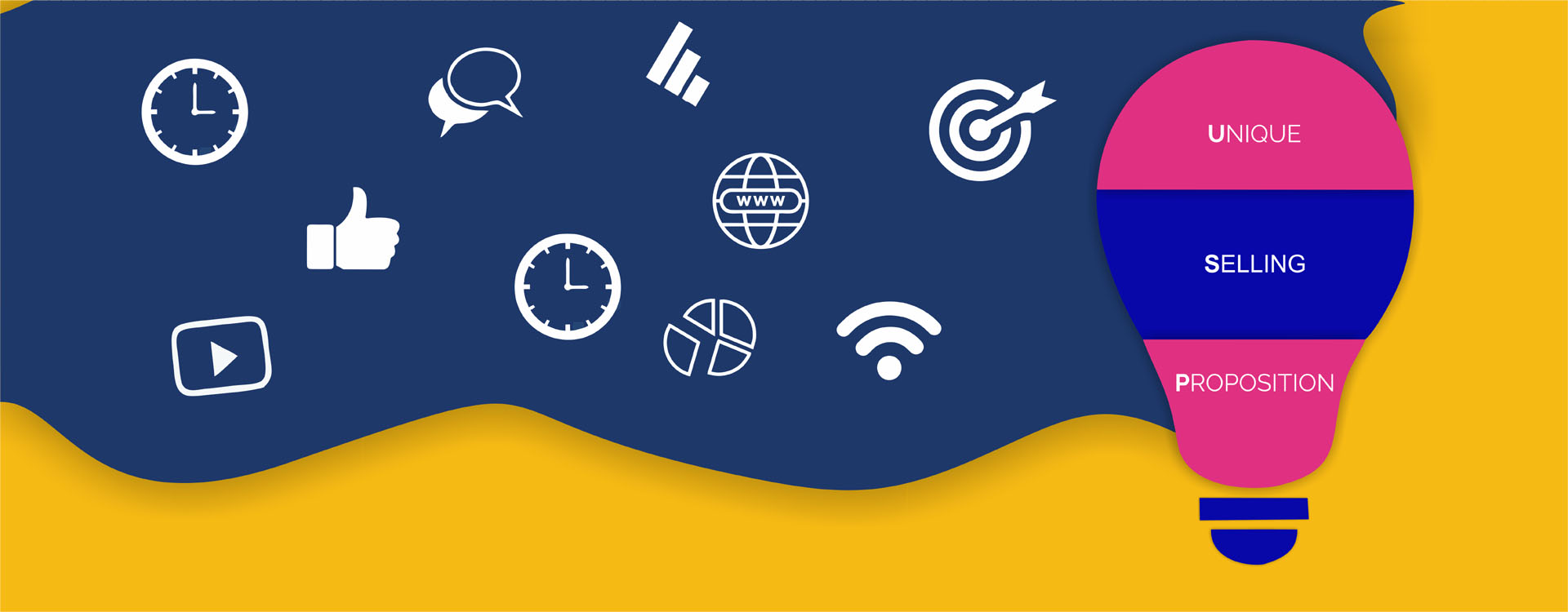Whether you find yourself running a multinational corporation or a nice little corner coffee shop, there is one question that every business has to face in order to survive – ‘What makes you so special?’ There are millions of brands, businesses, ads, products and services competing for the attention of the same customers and clients you fight for. In order to stand out from the crowd, you need to make a statement – something that says “I am here! Here is why you should choose me!” This is where the USP (Unique Selling Proposition) comes in. Let us have a look at how you can craft the perfect statement that will get all eyes on you.
What Is Unique Selling Propostion?
A USP or (Unique Selling Proposition) is like a fingerprint. It is a unique way in which you identify your business to the customer. It is what sets you apart from the rest in an avalanche of brand names that flood the market on a daily basis. When used in the right way, a USP can work wonders, it helps you attract a specific demographic of customers and retains them, all while letting everyone know what it is you actually do.
For example, if we were talking about an industry that caters to automotive accessories, your business might be luxury and custom automotive accessories, whereas the competition only sells ready-made products.
‘‘
Think of USP as part of your brand identity within the industry. It is your very own signature style that you bring to the line of business you are in.
Example Of How Some Businesses Is Using USP
Most coffee brands in the market nowadays focus on giving the consumer a smoother and more refined coffee. The majority of coffee companies focus on a good flavour, low caffeine and exotic tastes like Madagascar brews or something of that sort. One coffee brand Death Wish Coffee– has marketed itself in such a way that it really stands out from the crowd. Death Wish focuses on selling itself as the ‘world’s strongest coffee’, now if that is accurate or not that is up to the individual to decide but the statement itself stands out as something almost alien.
In a world where everything is about refinement and luxury, this particular coffee caters to the niche group that is looking for that extra kick in their morning step. True, it will not attract every coffee drinker at a moment’s notice, but it does pull the attention of a very specific group of people. This is what you would call targeted marketing.

How To Craft A Bold Unique Selling Proposition
Get inside the customers’ head
The premise behind the ideal USP is to attract a specific demographic of customers to your brand and business. For that to happen you need to appeal to them in a way that they can truly connect with what you stand for and provide. Understand where they are coming from. Find out what they are looking for, why they are looking for it and how you can take that need to the next level. The key is to identify a product or service that solves an existing problem in the market. Gathering data about the customers’ age, gender, location, buying frequency will tell you all you need to know, and to acquire this data all you need to do is invest in some research and analytics like the ones available on your website analytics platform.
Based on who is visiting your website and how often you can create customer profiles of loyal customers and tailor a narrow and targeted marketing strategy around them. This not only gives the brand a certain authenticity but also makes the customer feel valued.
Keep it simple
When you search for a hardware store on Google or a way to buy tickets to that concert that you have been dying to go to, the easier the process is, the better. The same principle applies here. Customers look for a quick, easy and quality solution to their problems. From the outset make it so easy that customers can quickly find your product or service when they search for a solution. It should be a clear and simple statement that tells them everything they need to know the minute they come across the brand.
The statement should be able to answer the following questions:
- Does the product or service improve the lives of the customer?
- What makes it better than the competition?
- Does it offer versatility?
A good rule of thumb to maintain is to try and create an elevator pitch. A short simple pitch that you might give a stranger who knows nothing about your product or service in a way that they can grasp the concept of the business. If it makes sense to them, then you have the beginnings of a solid USP.
Highlight the differences
Every brand tries to sell itself as the best or the fastest. The problem with those types of descriptions is that it is very generic and one-note. The customers have seen the same thing repeated over and over so many times that it makes no impact. Instead of these generic and vague descriptions try and highlight the specific qualities of the brand.
Try to reinforce the statement with numbers, facts and figures that come from a reputable source like the Harvard Business Review. This gives you a unique edge and credibility as a business.
Incorporate company culture
Knowingly or unknowingly, customers align themselves with the values of a company which goes beyond the norms of marketing. They identify their actions with the brands even after purchase. A brand that presents a socially-conscious approach and gives back to the community or environment in some way, makes the customers feel like they are a part of that social contribution by purchasing services or products from you. They feel like enablers for social change and that creates a deep and loyal bond between the customer and the business.
Do not be afraid to ask them personal questions regarding social changes, do surveys, conduct group studies and get a sense of the situation on the ground. The more connected a business is to the community, the more the community will connect back.
Here are a few ways in which you can help establish that personal connection with the audience:
- Give them a back-stage pass. Show them the inner workings of the business and the way it operates on a daily basis. The transparency offers them a chance to see that you are in fact doing what the business is advertising.
- Tell them a story. The general public wants to know the brand, so tell them about where it started, how it started and why. Insight into the origins gives everyone a sense of nostalgia and relatability. This effectively humanises the brand beyond just a business.
- Give them a back-stage pass. Show them the inner workings of the business and the way it operates on a daily basis. The transparency offers them a chance to see that you are in fact doing what the business is advertising.

Adapting USP For Advertisements
It is crucial that the USP is highlighted in the copy of your advertisement. Ideally, you should make it the headliner or the first line of your ad copy. If it is used as the headline or first line, make sure it is littered with all the right keywords and if it is somewhere else in the body of the copy make sure it highlights the benefits of that specific product or service parallelly to the brand.
By benefits, you should not go off on a tangent and start talking about how great the product or service is, rather you should talk about how it helps the customer. You need to place more value on the pay-off the customer will receive and how it helps them than by talking about your own brand. Once again it comes back to the concept of trying to solve a problem as opposed to selling something to the customer.
‘‘
Apart from adapting USP for landing pages and advertisements, there are a ton of other applications you can utilise it for. For example, social engagement campaigns, PR, transition to a new line of products or services and so on. The sky is the limit.
Adapting USP For Landing Pages
The next stage of USP usage is for the landing page where the customer will be redirected after they click on your ad. If the advertisement was a short summary of what the USP was, then the landing page is the more detailed version. It highlights the different aspects of the USP and gives customers an over-all understanding of all the little details. It reinforces what they saw in the ad.
It is on the landing page where you can go into the intricacies of the product or service and talk about all the ways in which it is specialised for a specific problem. Give the customer different angles from which they can understand the product or service and finally, end it with a call to action.
At this point, you could potentially highlight any special offers that are in place that would further entice audiences to explore or make a purchase. It all really comes down to marketing at the end of the day. Check out our article on ‘marketing’ to learn more about the bigger picture.




